Hello Hive community!
This post is the second part of my visit to the Museum of History and Civilisation in Rabat!
Leaving the main hall, I headed for an outdoor courtyard where I found some rock engravings dating from the Neolithic period, found in regions such as Oukaïmeden in the High Atlas and the Oued Drâa valley in the pre-Saharan zones.
These engravings, made over a period of more than 8,000 years, reflect the daily life and environment of prehistoric man before the invention of writing. They show a variety of scenes: hunting, animals such as antelopes and elephants, human figures, tools from the Metal Age, two-wheeled chariots, and even symbolic motifs. These works bear witness to the social, economic and cultural organisation of our ancestors.
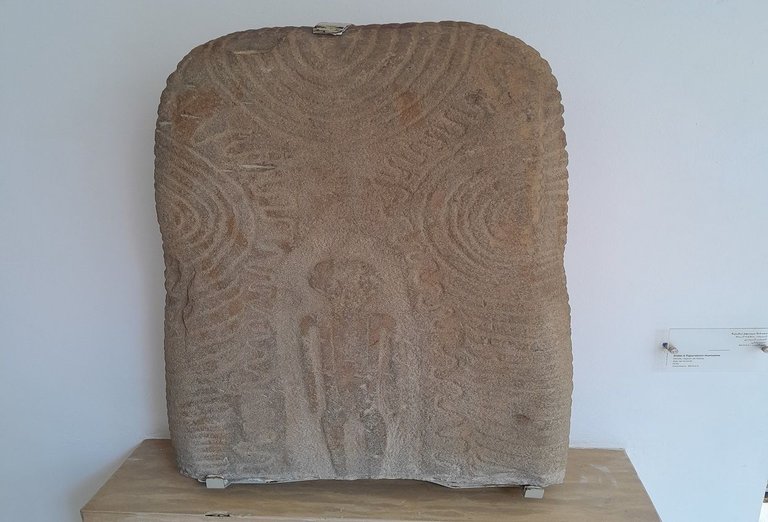
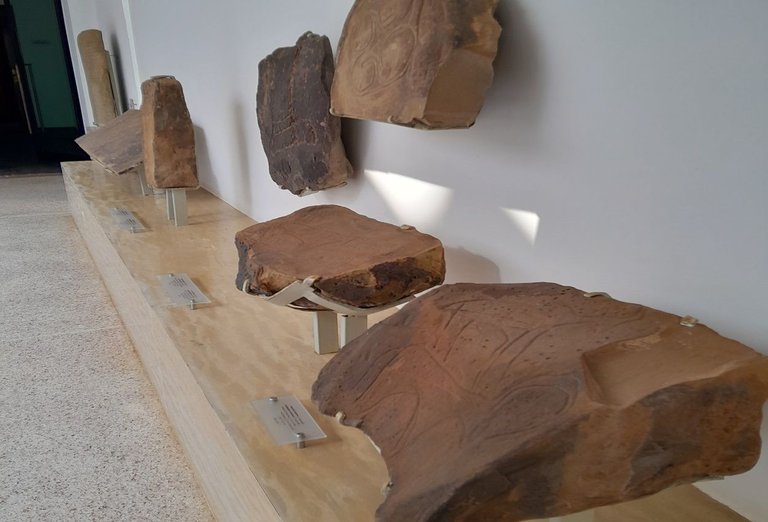
Libyan script appeared in North Africa around 3,000 years ago and lasted until Roman times. With its 24 letters, it was read vertically, from top to bottom, and is considered to be the ancestor of Tifinagh (Amazigh language), although there are differences between the two systems.
Libyan funerary stelae discovered in 1928 at Ain Jmaa near Casablanca and at Sidi Slimane, as well as other rock inscriptions in regions such as Tetouan, Tangiers and the Atlas mountains, bear witness to the age of writing in Morocco. Proof positive of the region's rich history!
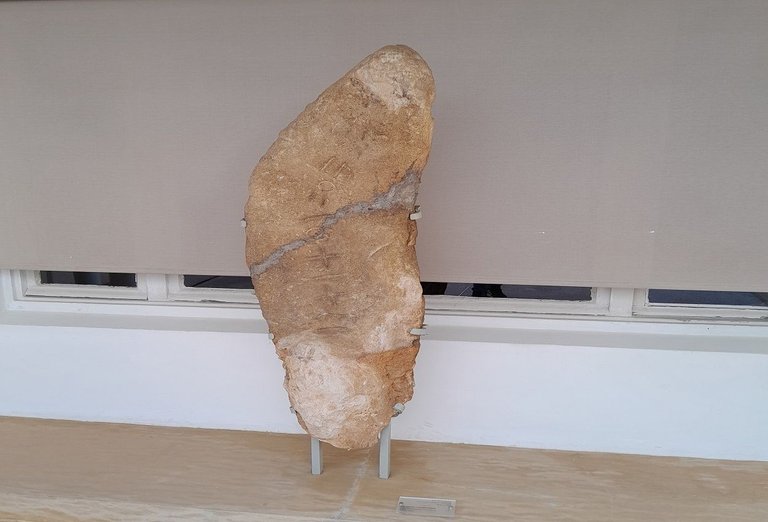
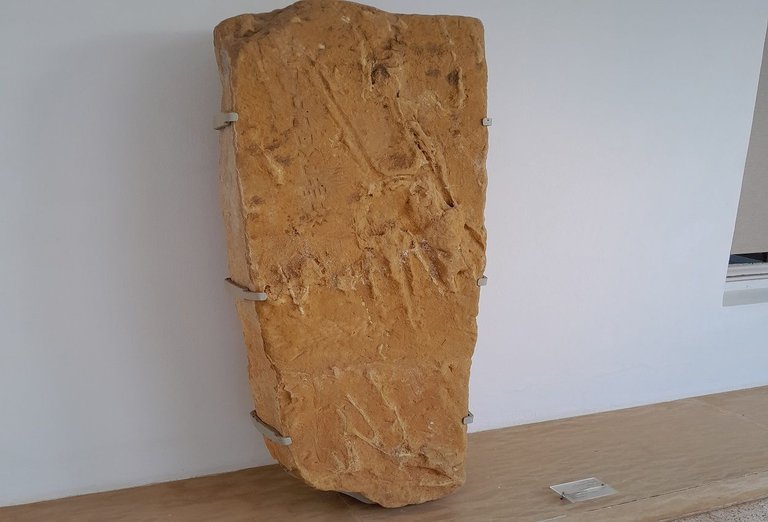
Latin inscriptions are one of the main sources for the history of Roman antiquity in Morocco. A large number of inscriptions have been discovered during archaeological excavations at a number of ancient sites, notably Volubilis, Banasa and Thamusida.
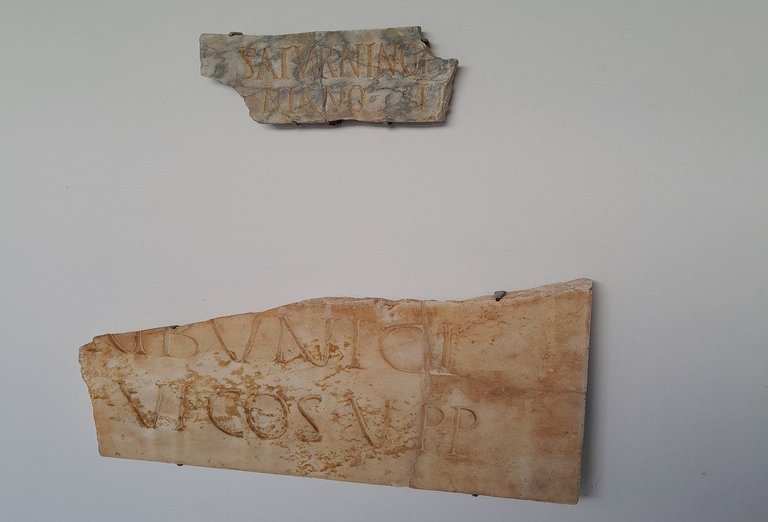
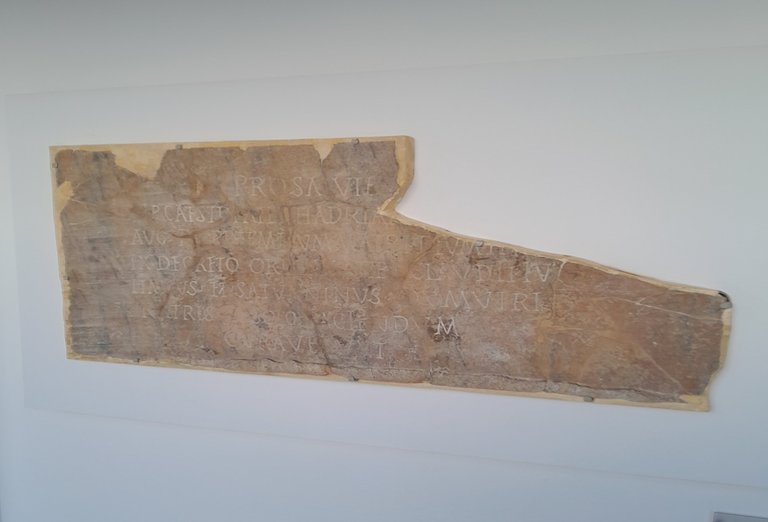
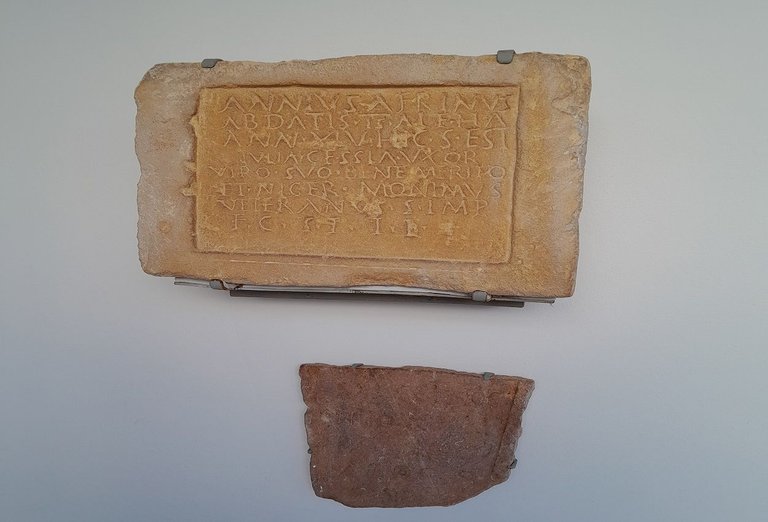
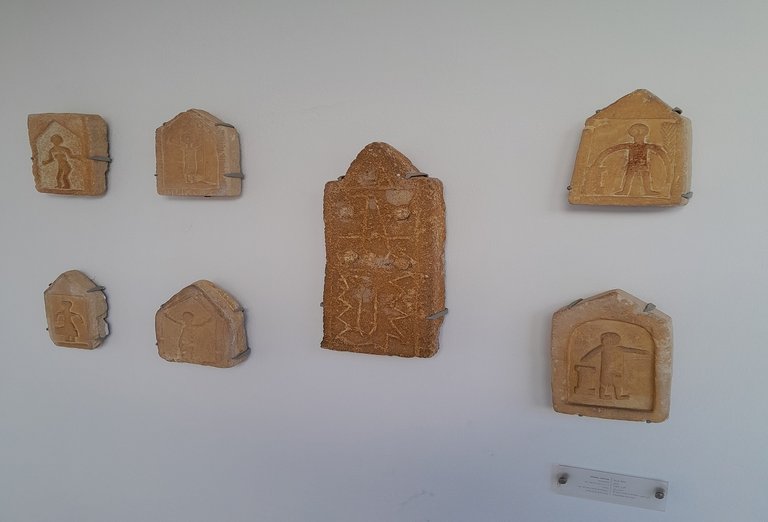
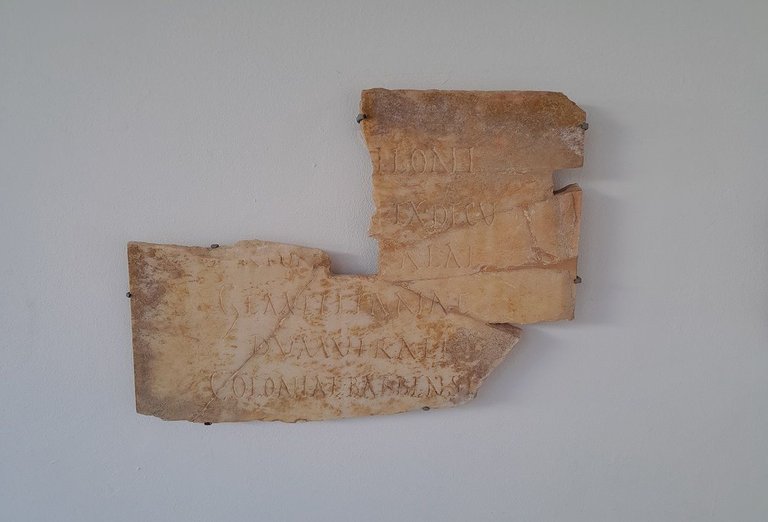
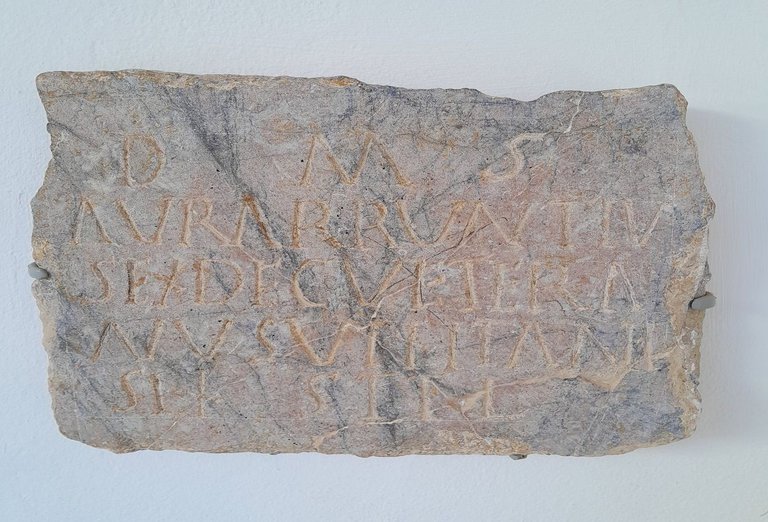
In Morocco, tombs often have funerary steles, which may be plaque-shaped or prismatic. These types are also found in other Islamic countries. What I find interesting is that they are carved in stone or marble, which is the most commonly used material.
The inscriptions, often in cursive or kufic characters, repeat Koranic verses or formulas honouring the deceased. They are also decorated with geometric motifs, giving them a certain elegance. These stelae, used from the time of the Almoravids, were very common under the Merinid and Saadian dynasties.
What I like about them is that they are not just simple funerary monuments. They pay tribute to important figures such as sultans or princes, and they tell us a lot about the society of the time.
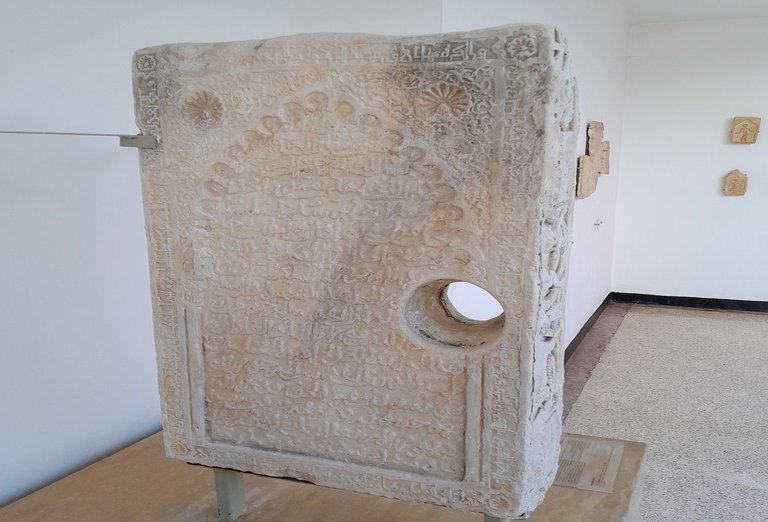
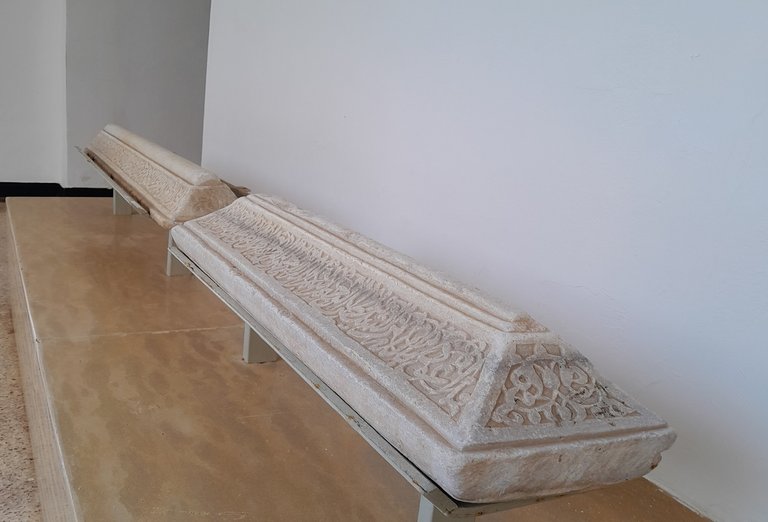
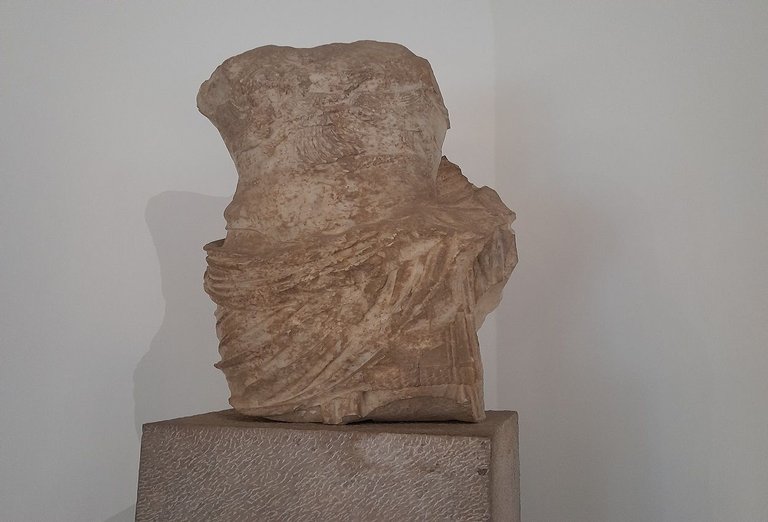 Imperial statue trunk - Volubilis Roman period
Imperial statue trunk - Volubilis Roman periodI then moved on to the other side of the courtyard, where the marble room contains sculptures, the best examples of which come from the sites of Volubilis, Banasa, Thamusida and Sala. Most of the works are carved in Italian Carrara marble or Greek Pentelic marble, which seems to have been the main marble exporting region for Mauritania Tingitana. The statuary consists mainly of statues, portraits and statue bases. The latter are made from local materials such as grey limestone or dune sandstone.
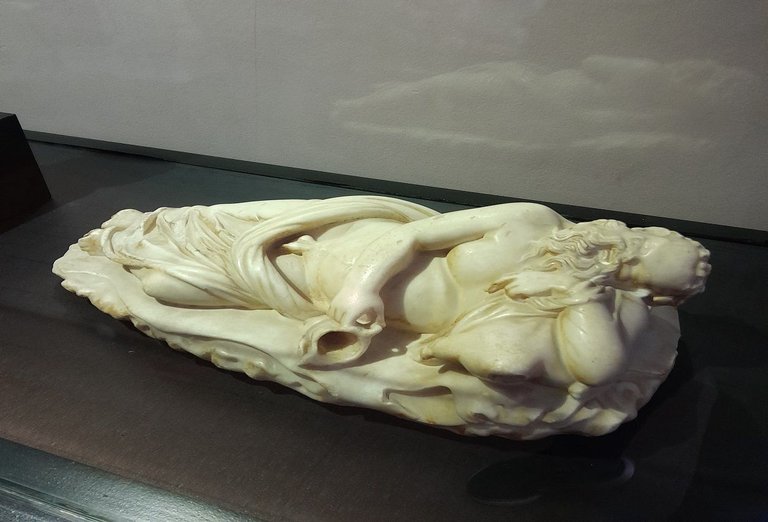
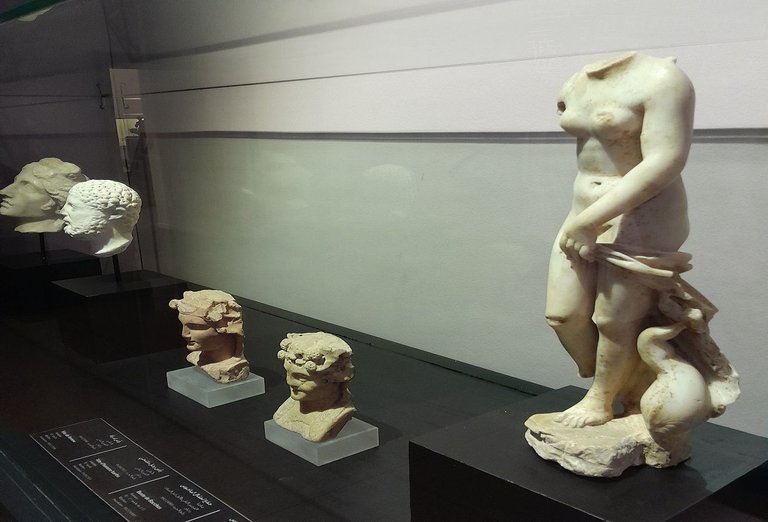
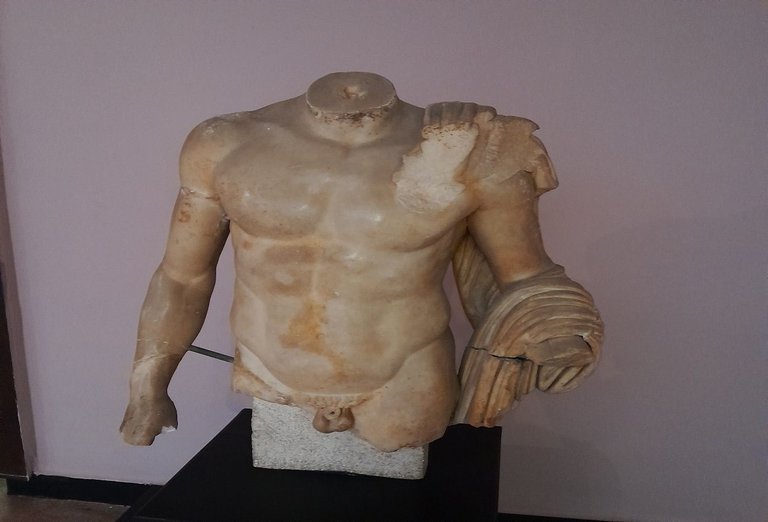
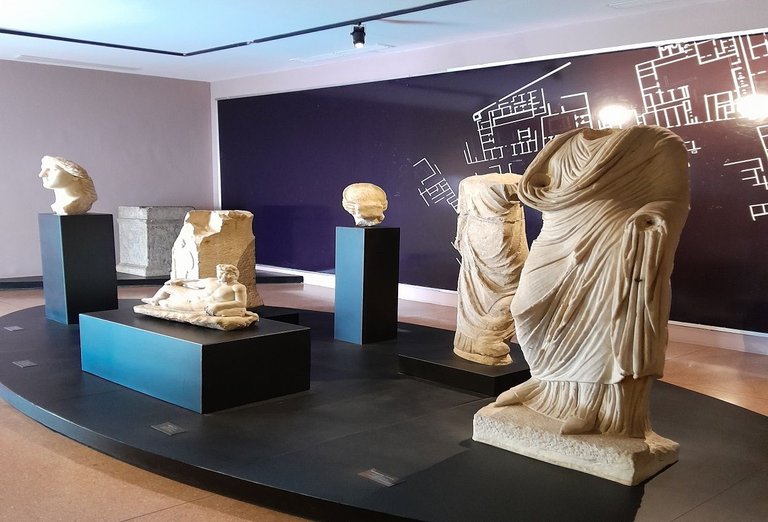
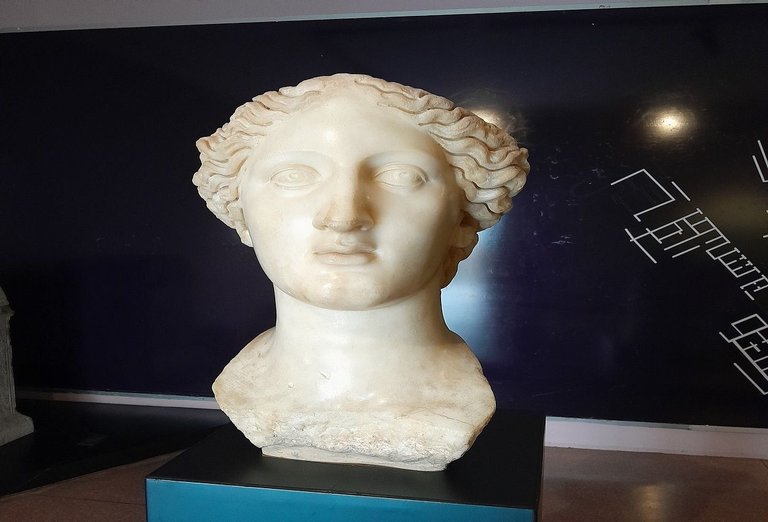
Statuary can have a variety of functions, including religious ones (the head of the goddess Juno). It also fulfilled an honorary function, as attested by the inscriptions engraved on the bases of statues such as the one dedicated to Marcus. Sulpicius Felix.
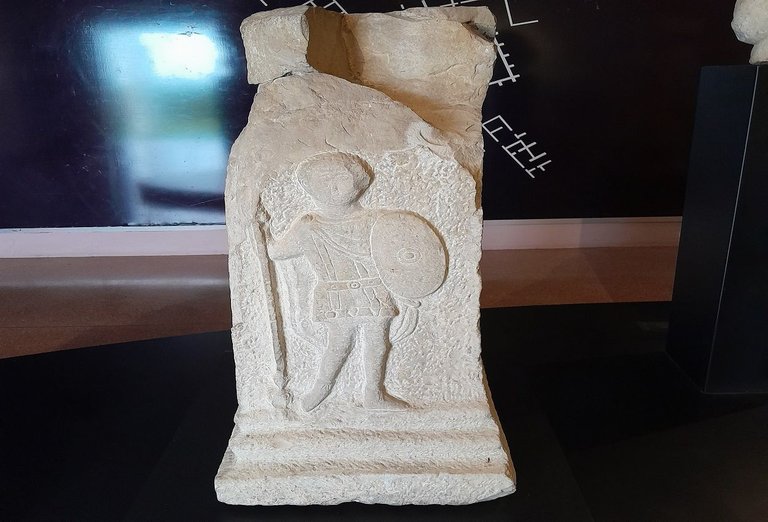
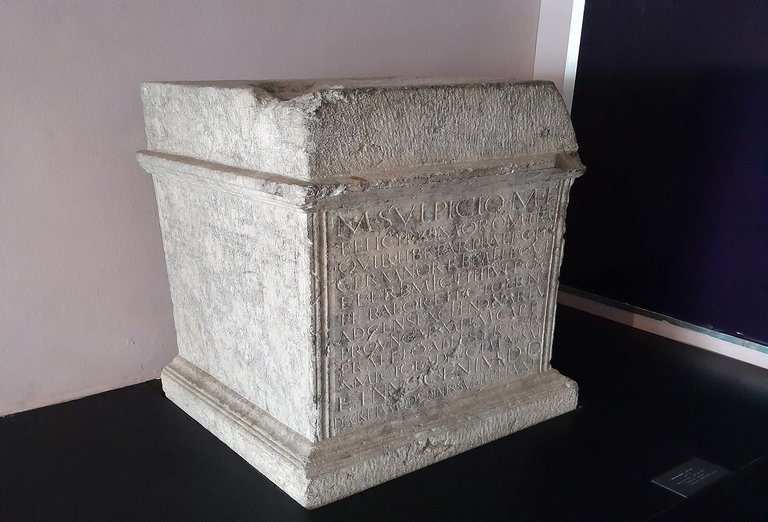
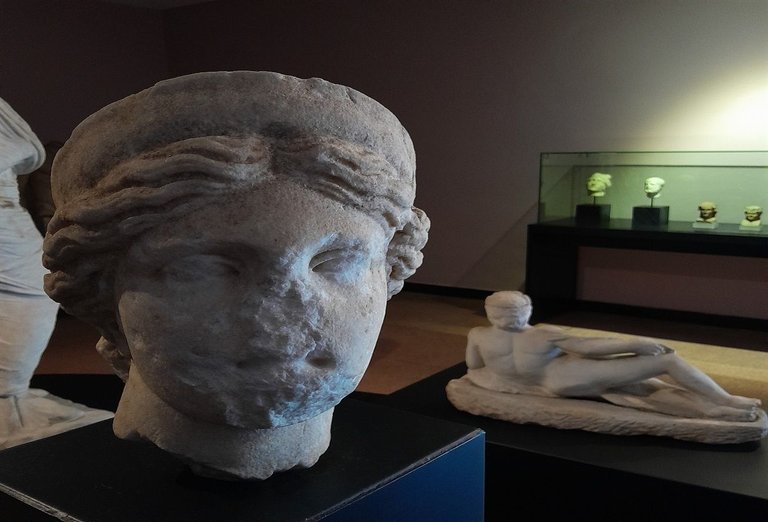
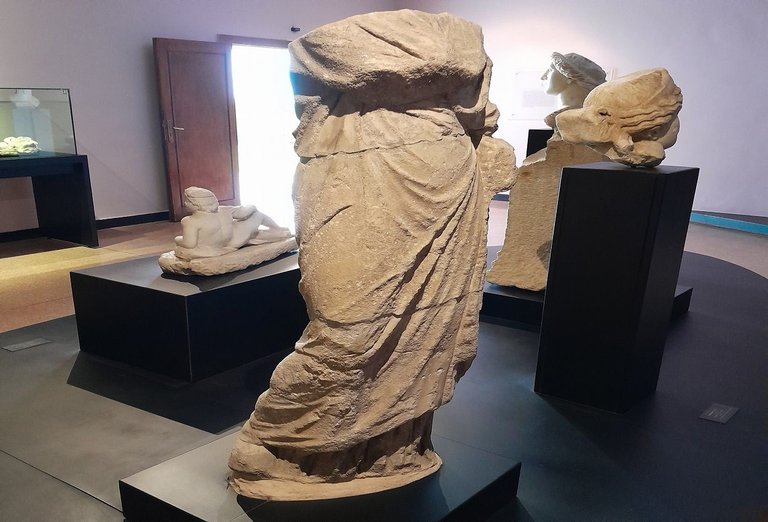
Archaeological excavations in Morocco have revealed numerous temples dedicated to deities or deified kings, such as the temple at Sala where the emperor Ptolemy was worshipped. What is fascinating is that, before the arrival of the Romans, little was known about the local gods, with the exception of one indigenous deity identified thanks to votive stelae found in temple B at Volubilis.
In Roman Morocco, Greco-Roman gods such as Jupiter, Juno, Minerva, Venus, Mars and Bacchus were highly honoured, as they were in other colonies of the Empire. But that's not all: oriental gods such as Isis, Cybele, Anubis and Attis were also present, probably introduced by merchants and soldiers from Egypt and Asia. It just goes to show what a crossroads of cultures and beliefs ancient Morocco was!
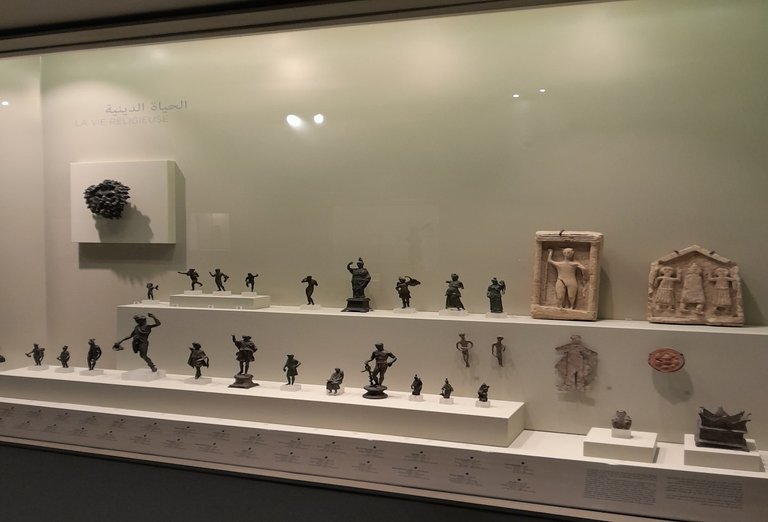
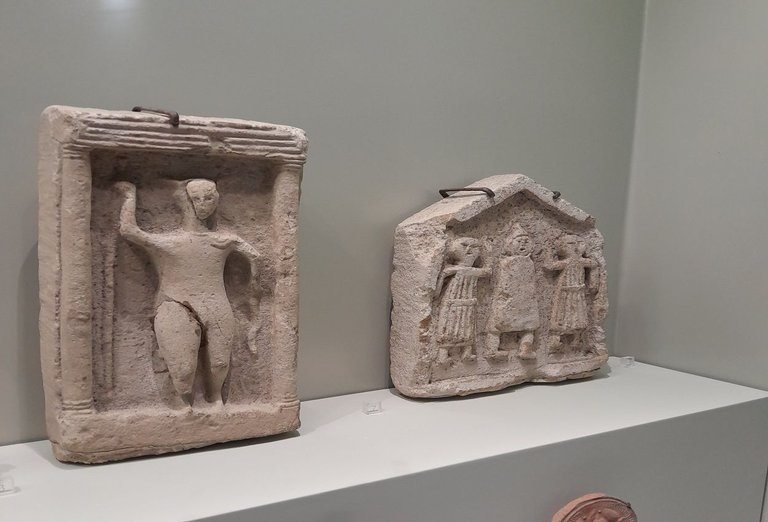
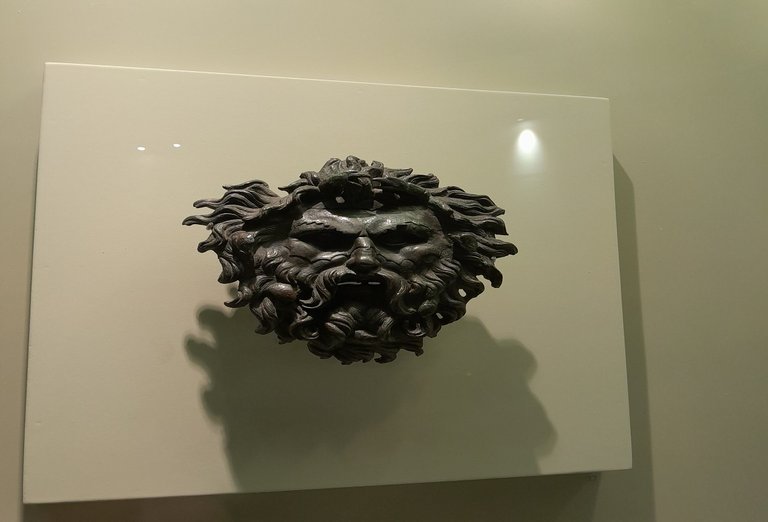
In the heart of the bronze room, I found a rich collection of noble objects from Morocco's prestigious ancient sites, notably Volubilis, a UNESCO World Heritage site that is the national and international pride of the Museum of History and Civilisation.
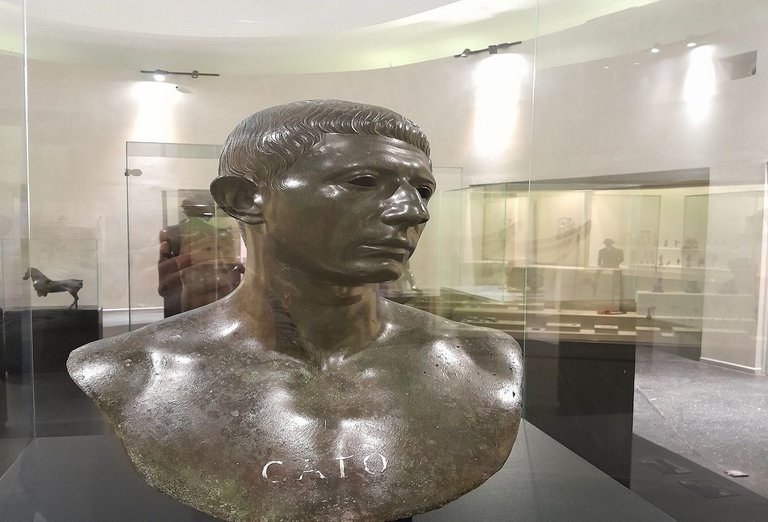
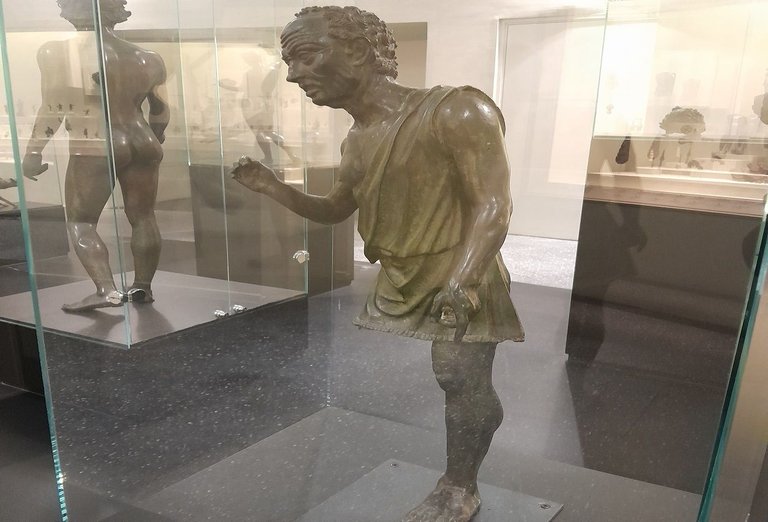
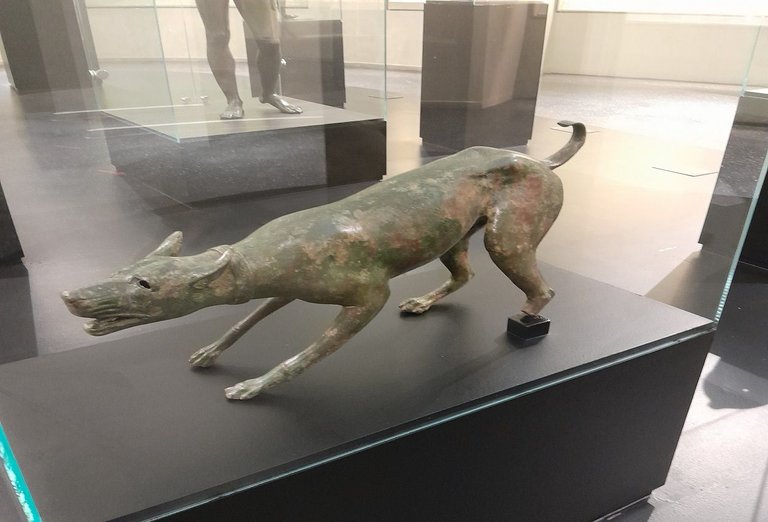
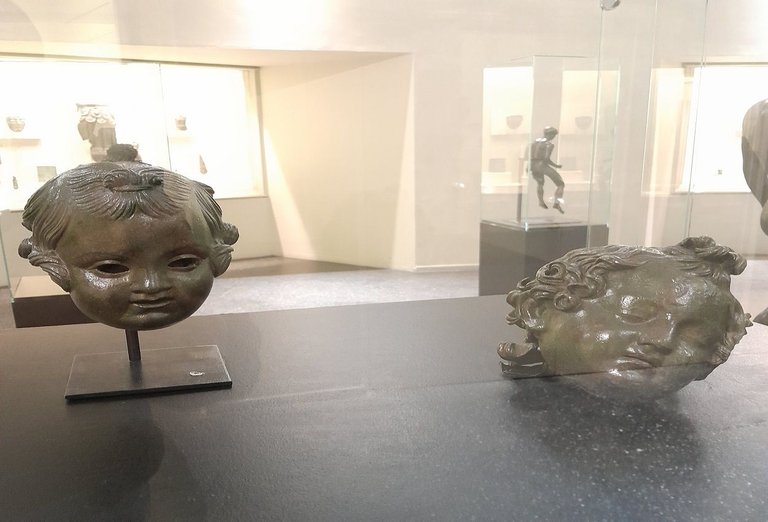
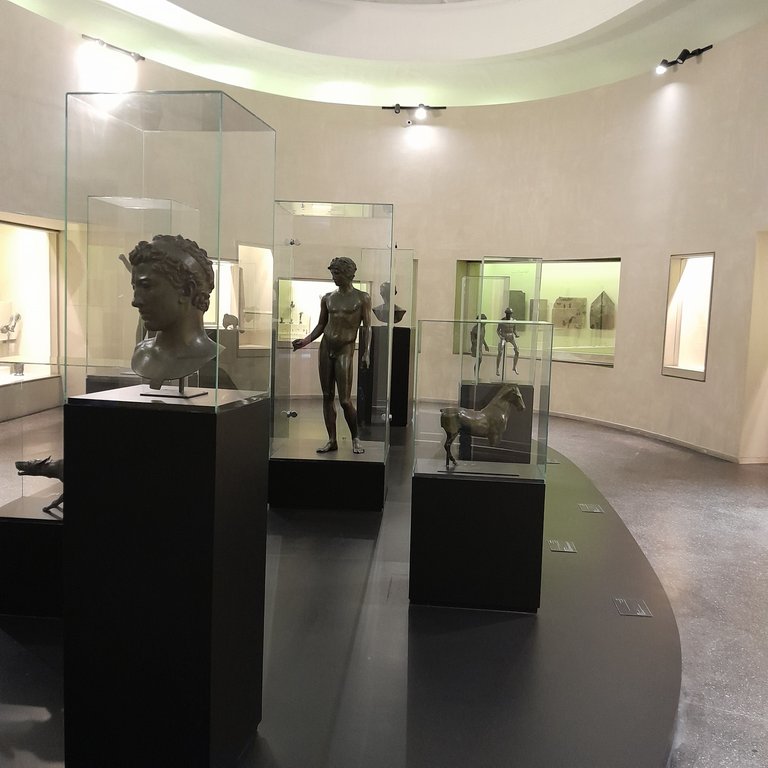
Mauritania Tingitana was controlled by a series of camps spread across the territory, whose garrisons organised surveillance patrols.
According to information provided by ancient texts and especially inscriptions, the garrison of Mauretania Tingitana numbered between 7,500 and 9,000 men, and was made up of auxiliary troops, infantry cohorts and cavalry wings. The soldiers came from various parts of the Empire (Pannonia, Syria, Spain, etc.), and from the 2nd century onwards were largely recruited locally. At the end of their service, these soldiers were granted Roman citizenship. A large number of bronze military diplomas, certificates of good conduct, awarded to veterans leaving the service, have been found in Morocco.
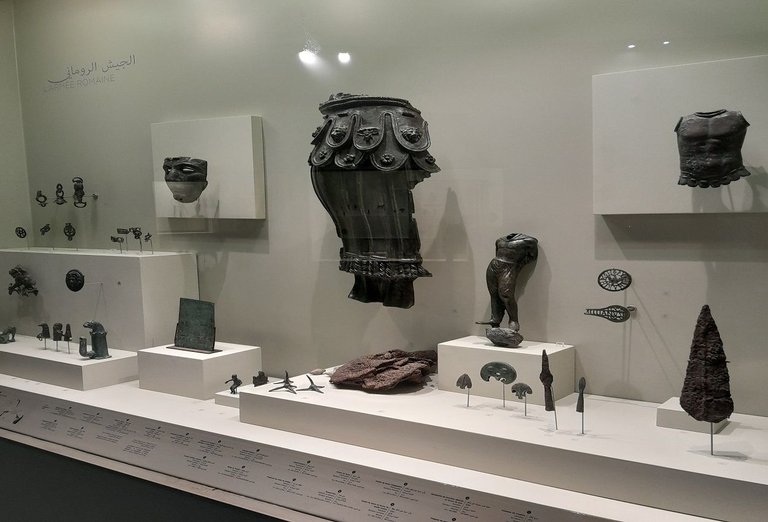
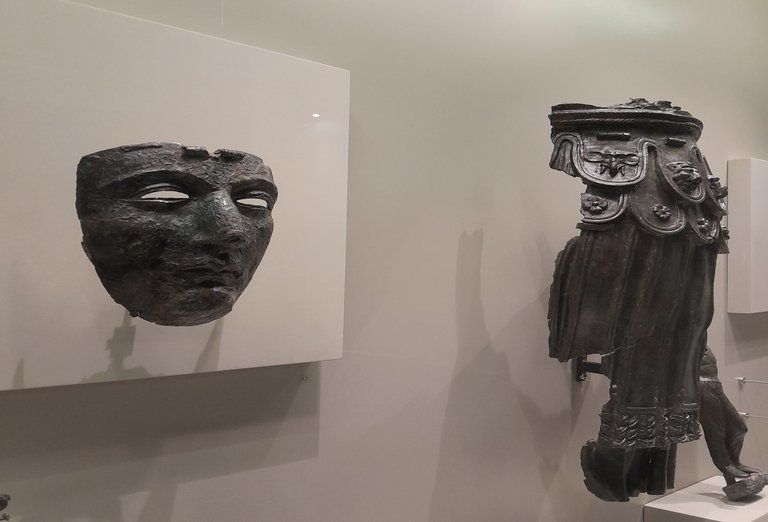
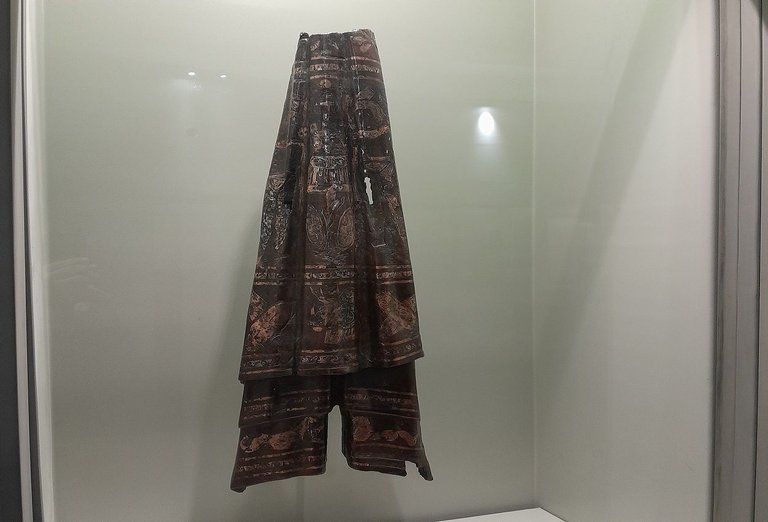
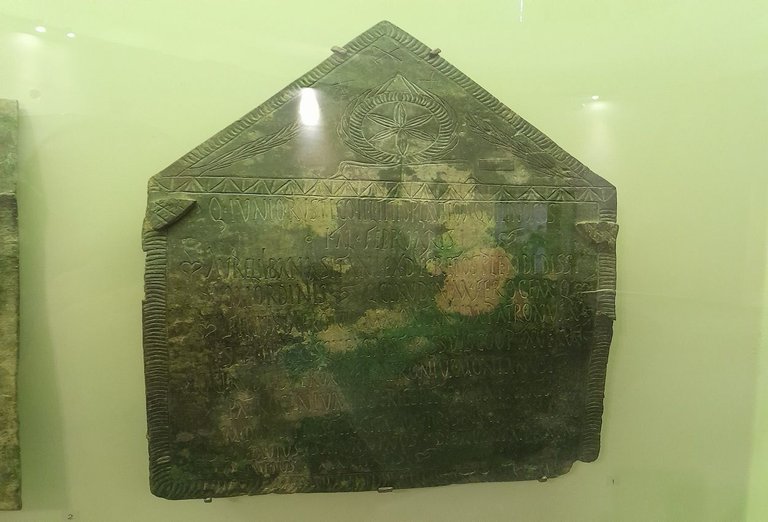
This piece below comes from a Mauritanian house in Lixus that was destroyed during the Roman conquest. It illustrates Theseus' victory over the Minotaur. The young hero, his head girded with the headband of victorious athletes, overcomes the monster of Crete by grabbing its horns. The dewlaps, ears and horns are reminiscent of the half-man, half-bull monster that legend attributes to Pasiphae's son.
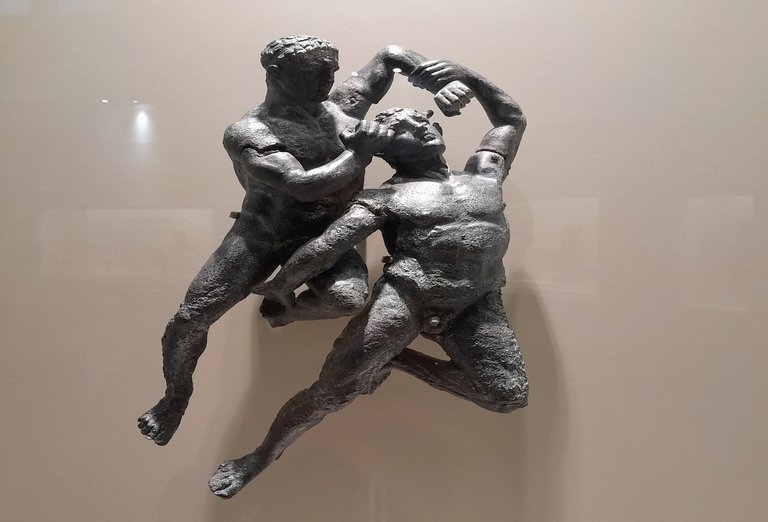
Before leaving the museum, I passed through a small garden where a number of archaeological artefacts from the ancient site of Volubilis were on display. Among them were some small olive presses. Frankly, it was fascinating to see a mill that was in use over 2,000 years ago.
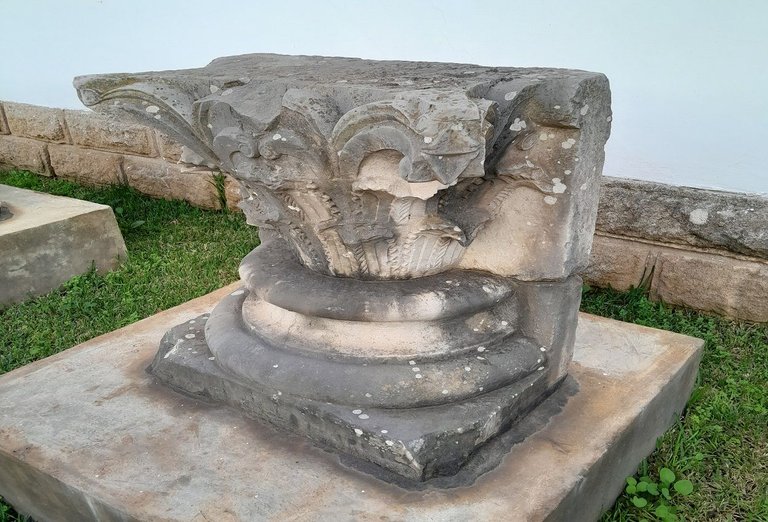
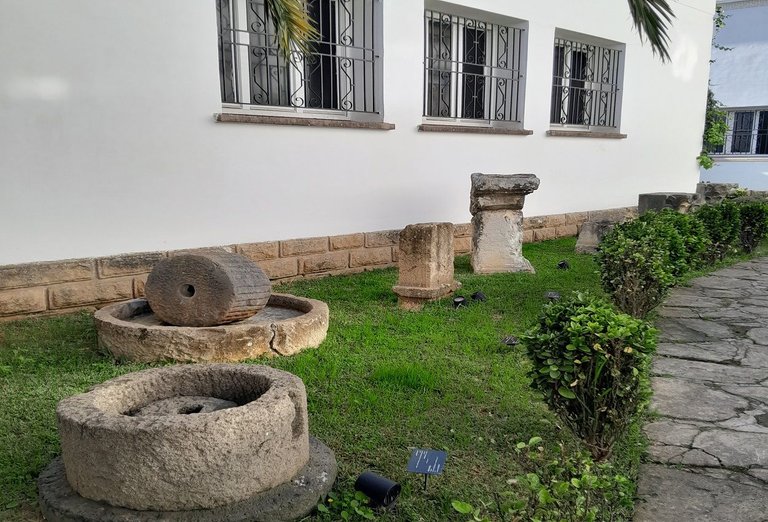
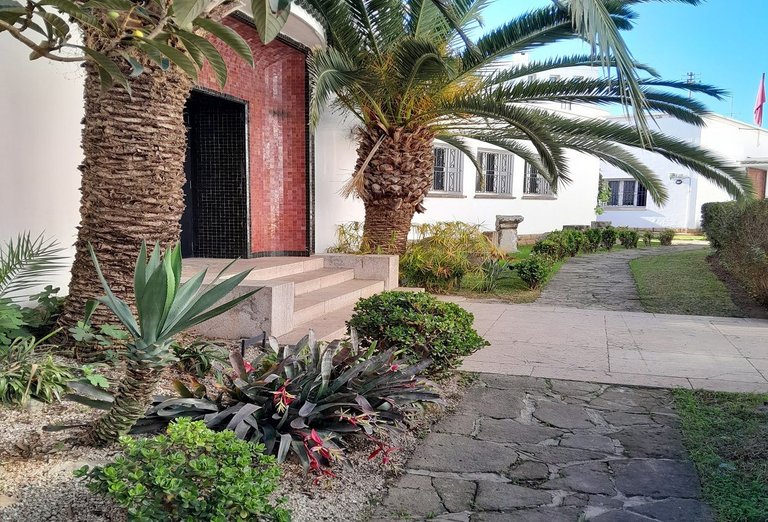

I hope you enjoyed your visit to the museum! I'm planning a little trip this week to the north of Morocco, and I'll be writing about these magnificent regions in the days to come. Take care, and see you soon!
> Note: Information taken from descriptions on museum posters.

Photos taken by my own phone (Samsung Galaxy A04s).

You can check out this post and your own profile on the map. Be part of the Worldmappin Community and join our Discord Channel to get in touch with other travelers, ask questions or just be updated on our latest features.
Woah! The details about the rock engravings, ancient scripts, and Roman influences in Morocco are fascinating😱 It must have been amazing to see all those artifacts up close.
In a very strange and beautiful place, there are things from ancient times and the way of life of our ancestors and their difficult lives. It is heart-warming to hear about the four thousand year old carvings used by our ancestors. These things contain emotions and all the things used by our ancestors and our lessons. Our ancestors have given us many things and we are still using them. The contribution is truly unforgettable. Thank you for presenting such a beautiful place and carvings.